The Japandi style is essentially a mix of Japanese and Scandinavian home design, combining Japan’s penchant for low-lying furnishings and minimalist interiors with the typically Nordic warm and cosy home style. Read on for Japandi’s defining elements and our top tips for pulling it off.
Light-hued wood
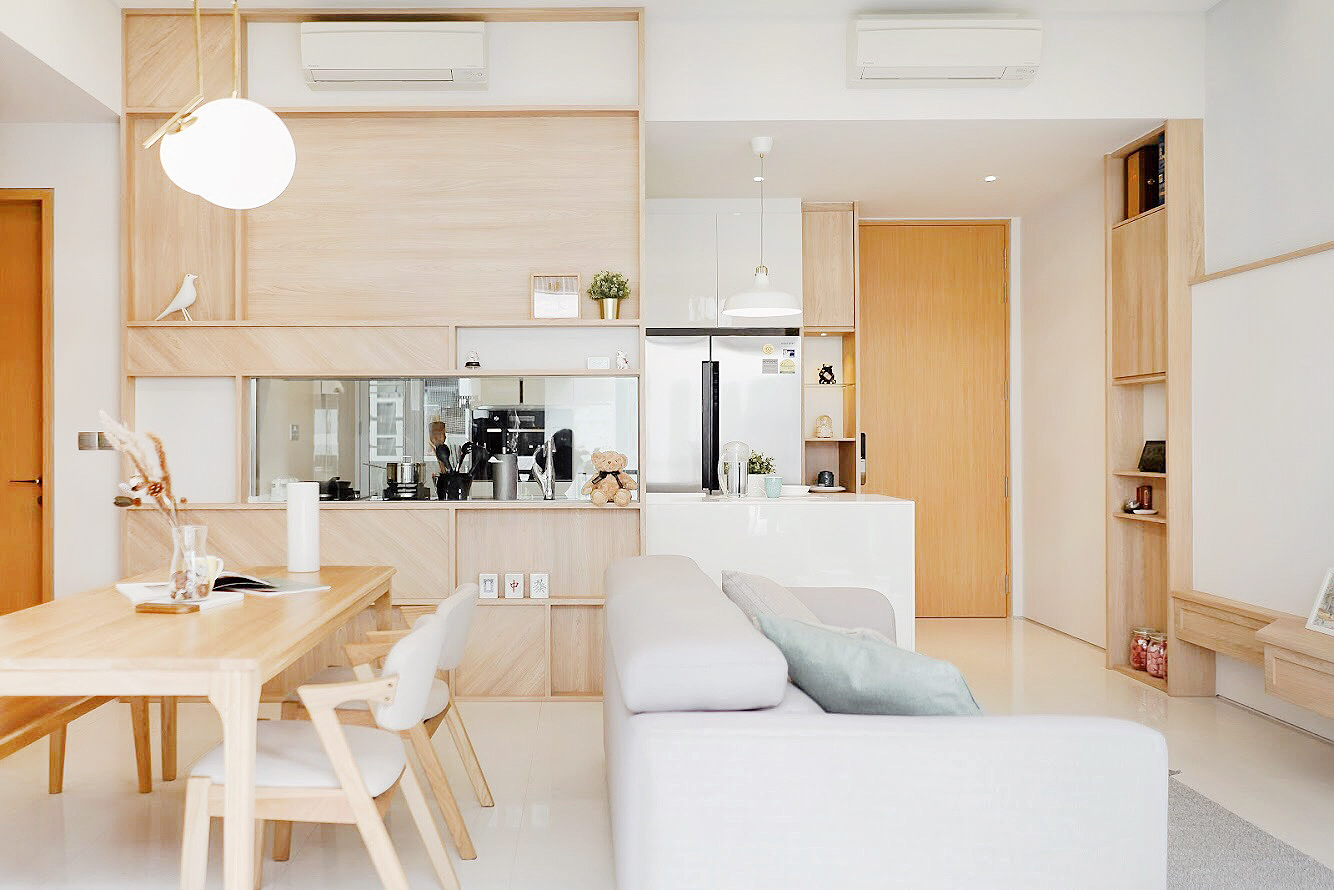
Design by Authors Interior & Styling. A partition with storage nooks can mimic the look of Japanese Shoji doors.
The only real Japandi must-have, light and warm-toned wood is the element that ultimately ties Scandinavian and Japanese interior design together.
Consider a wooden dining set and matching carpentry for some extra storage space, then balance out the wood tones with some grey soft furnishings and chair cushions to avoid monotony. White works well too!

Design by Artistroom. White fittings complement the light-hued wood tones of the Japandi style especially well.
The Japandi look often sports wooden panels with grooves and lines as well. You can apply this style of wood to headboards, feature walls or even the various fittings in your home, such as the sides of the kitchen island.
Shoji
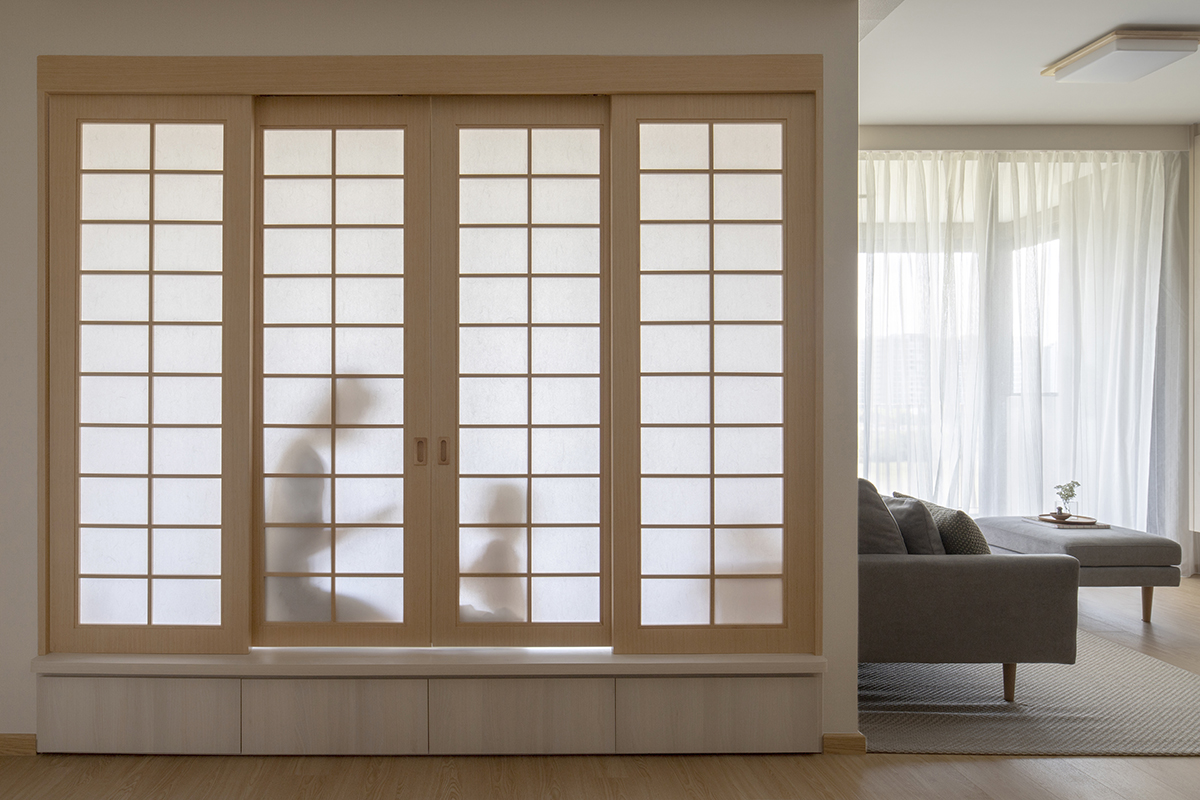
Design by Sync Interior. The translucent paper sheets make for an inviting home with little separation between rooms.
Shoji is a traditional Japanese door, partition or window, made with more or less translucent paper sheets mounted on wooden frames. These doors often slide and make for particularly multifunctional rooms, as they can be opened and closed as the need arises without taking up any extra space.
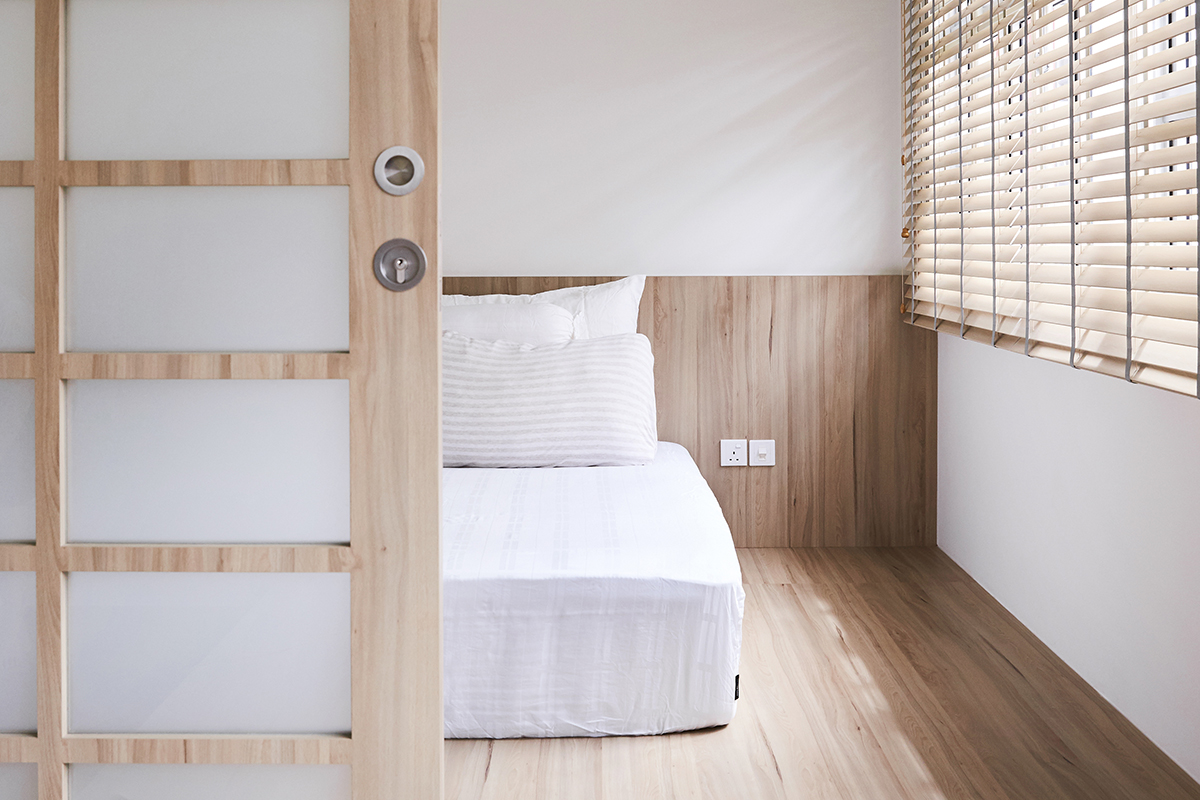
Design by Lush Interior Design. The bed was placed directly on the ground for that authentic Japandi feel.
In Singapore, Shoji is especially popular to enclose bedrooms, although we occasionally see it used for windows in between various indoor areas as well.
The beauty of Shoji is that it allows for greater connection between different rooms of the house, opening up the overall space. Of course, the sliding nature of these openings is pretty space-savvy too.
Low-lying furnishings
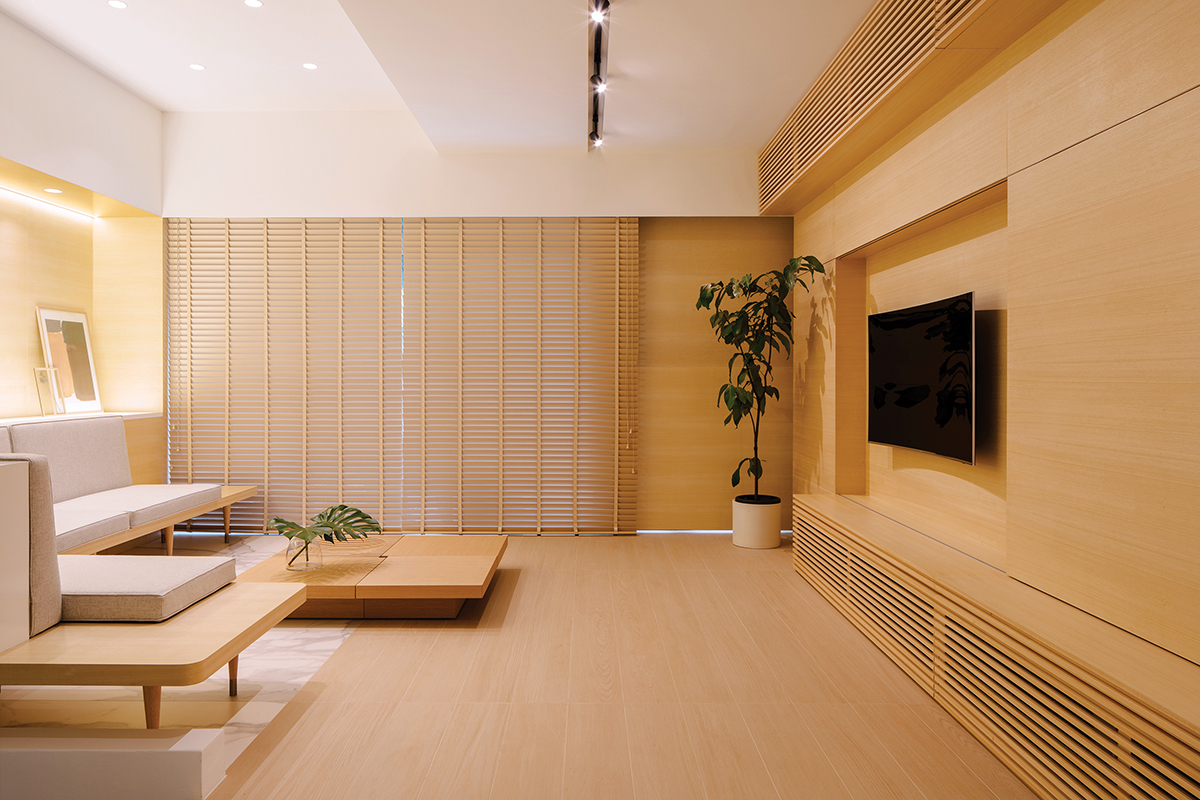
Design by Monocot Studio. A low coffee table with no legs will evoke the Japandi style with little effort.
Another staple of the Japandi style is low-lying furnishings, especially when it comes to seating areas and sleeping arrangements.
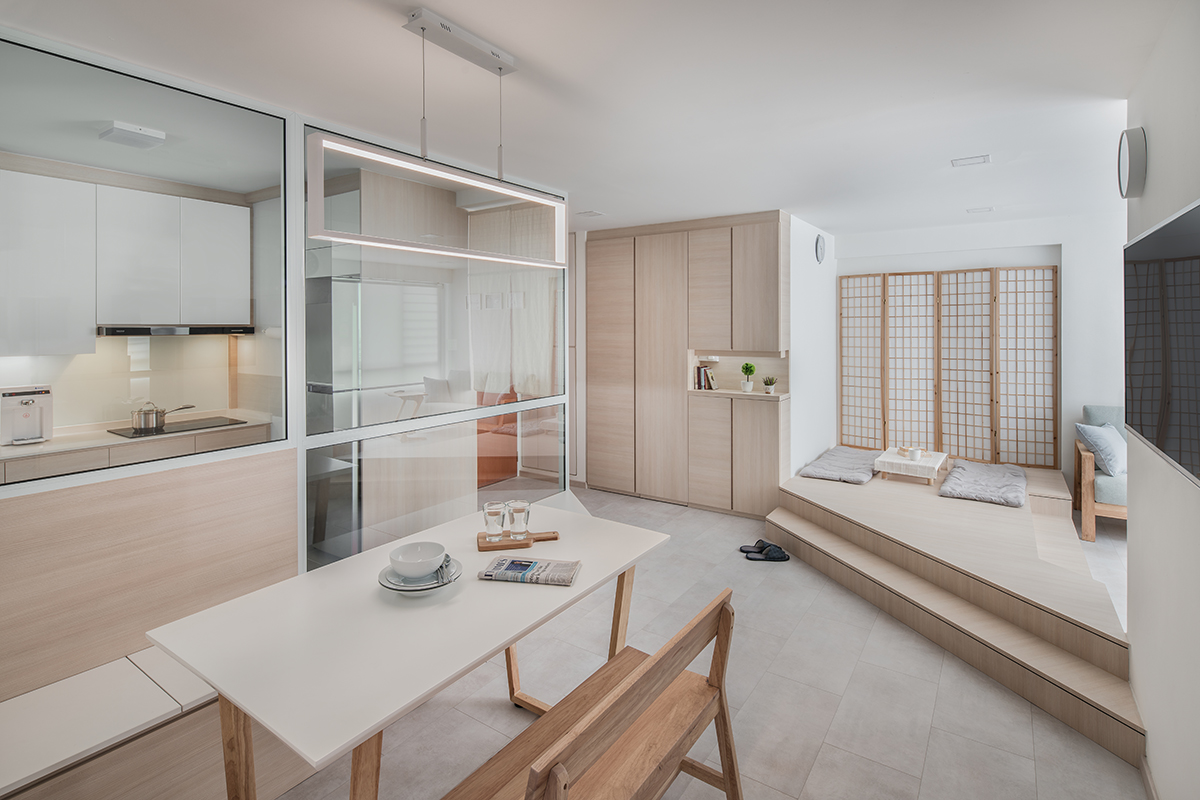
Design by WEIKEN. This subtle nook in the wall stores the living room partition when it’s not in use.
While some homeowners opt for low-lying sofas and coffee tables, those leaning more towards the Japanese side of the Japandi look will often choose built-in platforms instead.
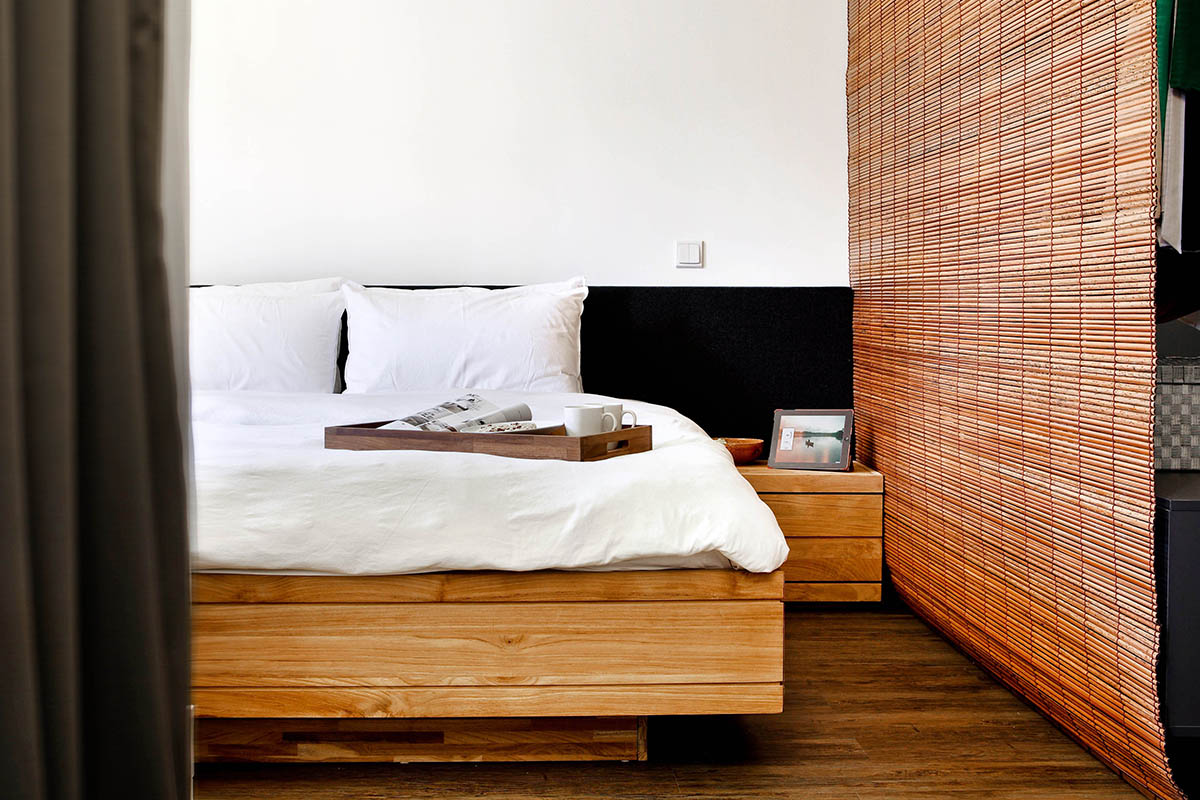
Design by The Design Abode. You can achieve a faux platform look by opting for furniture with a thick base and no legs.
Built-in platforms can be used as lounging areas, elevated living rooms and even alternatives to standard bed frames, giving you a whole lot of extra sleeping space. Just place your furniture, cushions or bedding on the platform and you’re good to go.
Compact living
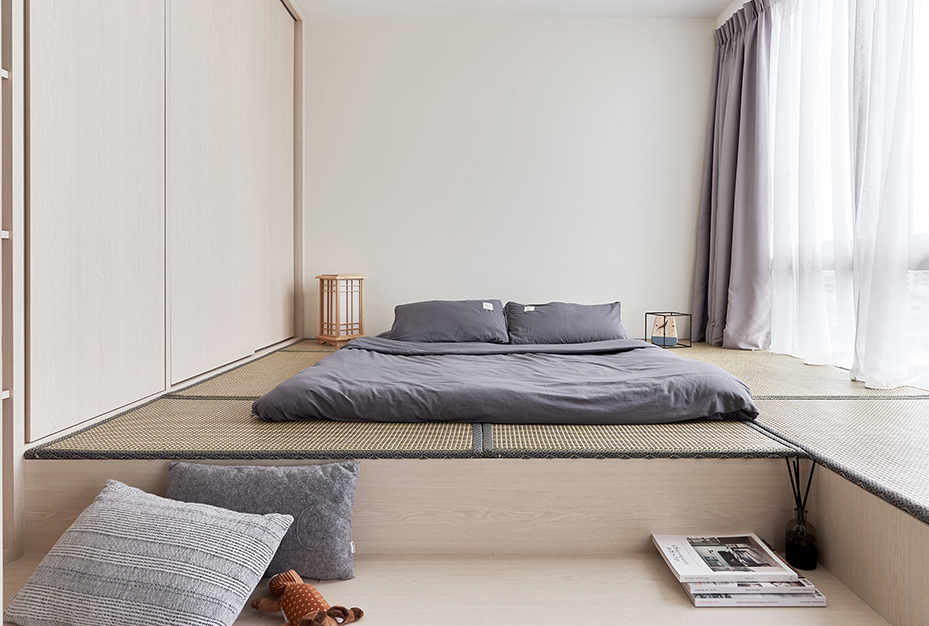
Design by Happe Design Atelier. This room transforms from a bedroom to a lounge area with storage space in the morning.
One of our favourite principles of Japanese interiors is compact living. This essentially translates to making the most of every space in the house through multifunctional furnishings and built-ins.
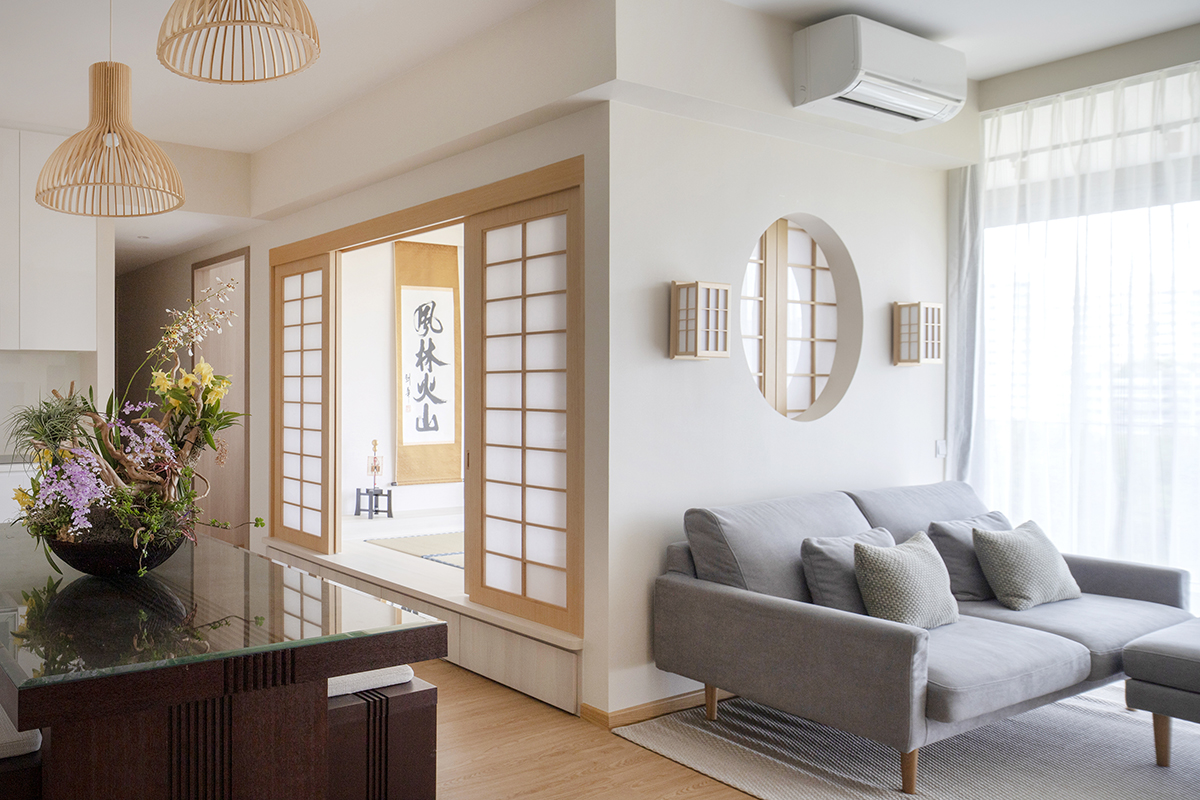
Design by Sync Interior. Rattan lamps are a good pick to round off your Japandi interiors.
A lounge area may convert into a bedroom at night; a sliding door may transform a room from private to communal within seconds. Hidden storage space is a crucial part of this compact lifestyle too, as bedding and clutter will need to be stowed away out of sight when the room transitions from one use to another.
Opening image courtesy of Monocot Studio. This post was adapted from an article originally published in idealhomes vol. 13.



